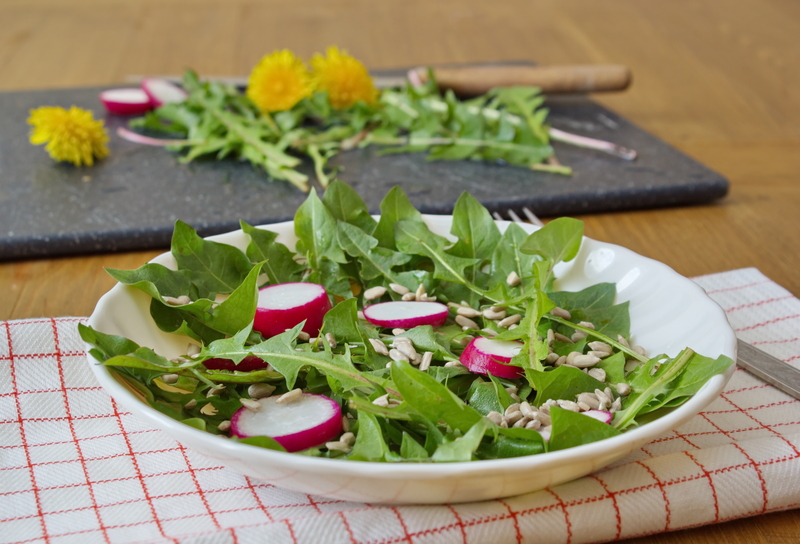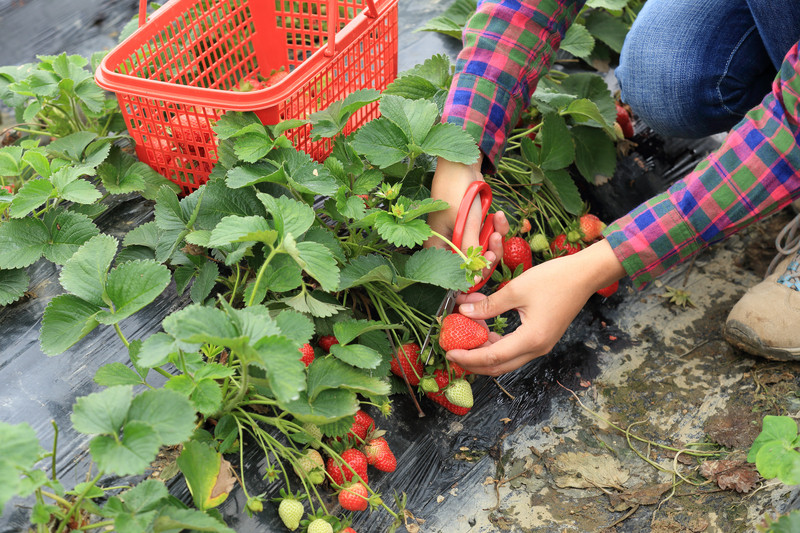Tail-Wagging Tips for a Dog-Friendly Yard
Posted on 06/06/2025
Tail-Wagging Tips for a Dog-Friendly Yard
Creating a safe, engaging, and comfortable outdoor space for your four-legged friend is one of the best ways to enhance their happiness and wellbeing. A dog-friendly backyard isn't just a luxury--it's an investment in your canine companion's physical health, mental stimulation, and overall quality of life. Whether you're a seasoned dog owner or a first-time pup parent, tail-wagging tips for a dog-friendly yard can help transform your outdoor area into a canine paradise.
Why a Dog-Friendly Yard Matters
Dogs are naturally active and curious creatures. A thoughtfully designed yard provides:
- Safe space for exercise and exploration
- Mental stimulation
- Opportunities for play, training, and bonding
- Relaxation areas for rest and shade
By making your yard dog-safe and engaging, you'll reduce unwanted behaviors rooted in boredom or stress and foster a happier, healthier pet.

Planning Your Dog-Friendly Backyard Oasis
Before you break out the shovel or start shopping for dog toys, effective planning is crucial. Consider the following:
- Dog's size, breed, and energy level
- Specific behavioral traits
- Local climate and yard size
- Your own gardening interests
Each of these factors can influence the layout, features, and materials you choose for your pet-safe outdoor space.
Secure Your Fence and Boundaries
1. Fencing: The First Line of Defense
No matter how well-behaved your dog is, secure fencing is essential. Fences keep your pup safely contained for unsupervised play and prevent escapes due to sudden excitement or prey drive.
- Height: Large or agile dogs may require fences 5-6 feet tall.
- No gaps: Ensure no holes or loose boards where dogs can squeeze out.
- Digging prevention: For diggers, bury chicken wire or install a barrier along the fence base.
2. Gates and Access Points
Install secure locks on gates. Consider self-closing hinges or double gates for extra safety, especially if you have escape-artist breeds.
Choose Dog-Safe Landscaping
Landscaping for dogs requires balancing beauty with safety and durability:
1. Avoid Toxic Plants
Common garden and landscape plants--toxic to dogs--include:
- Azaleas
- Oleander
- Sago Palm
- Daffodils and tulips
- Mushrooms
Visit the ASPCA's Toxic Plant List to check any potential additions to your outdoor dog haven.
2. Sturdy, Pet-Friendly Ground Cover
- Natural grass: Most dogs love grass, but some breeds may dig or create bare spots. Consider durable varieties like Kentucky bluegrass or Bermuda grass.
- Clover or synthetic turf: These are resilient and low-maintenance alternatives.
- Avoid cocoa mulch, which is toxic, and sharp-edged mulches that can hurt paws.
3. Pet-Friendly Flower Beds
- Use raised beds or fencing to protect delicate flowers from curious noses and paws.
- Stick to non-toxic, dog-safe flowers and shrubs such as sunflowers, marigolds, and snapdragons.
Create Shady, Comfortable Resting Areas
Even playful dogs need downtime. Improve your dog yard with shade and cool resting spots:
- Trees, large shrubs, or purpose-built awnings offer relief on hot days.
- Dog houses or weatherproof shelters provide a cozy retreat.
- Use raised, cooling dog beds to protect from damp or hot ground.
Install Play Zones and Enrichment Features
1. Agility and Play Equipment
Enrich your dog's yard with interactive features:
- Weave poles, tunnels, and ramps for agility
- Sand or dig pit for natural digging instincts
- Sturdy fetch or tug toys anchored to the ground
These enrichment zones keep dogs mentally and physically engaged, reducing destructive behaviors in the home.
2. Splash Zones and Water Features
- Doggy splash fountains or kiddie pools help cool pups down in summer.
- Ensure all water features are shallow and safe for unsupervised use.
- Replace water daily to prevent mosquitoes and bacteria.
Designated Potty Areas for a Cleaner Yard
Training your dog to use a particular section of the yard helps keep your landscaping healthier and easier to maintain.
- Mark designated potty zones with mulch, pea gravel, or artificial turf.
- Reward your dog for using these areas consistently.
- Regularly clean to minimize odors and keep the yard welcoming for both pets and people.
Install Paths and Perimeters
Many dogs love to patrol boundaries or run the same routes. You can tap into this instinct with functional, attractive paths:
- Gravel, flagstone, or concrete paths: Durable and provide a clean surface for running.
- Set alongside fences or flowerbeds so dogs can safely observe their territory.
- Mulch or smooth stones can soften the look and protect paws.
Outdoor Safety and Pest Control
Your dog-safe backyard should protect from outdoor hazards as well as encourage fun.
1. Non-Toxic Pest Management
- Avoid chemical fertilizers, herbicides, and pesticides. Opt for organic or pet-friendly products.
- Plant pest-deterring herbs such as lavender, rosemary, or lemongrass.
- Regularly check for bees, wasp nests, or other potential dangers.
2. Tick and Flea Control
- Keep grass and shrubbery trimmed.
- Brush pets after outdoor play to remove any hitchhiking ticks or fleas.
- Consult your vet about preventative treatments for your area.
Provide Fresh Water and Shelter Year-Round
Whether it's the height of summer or the chill of winter, access to water and protection from the elements is a must.
- Set up water bowls/shallow fountains in shaded locations and refill frequently.
- Consider heated bowls in winter climates to prevent freezing.
- Provide windbreaks or insulated dog houses for colder months.
Keep Your Dog's Personality in Mind
Every dog is different. Personalize your pet-friendly backyard to suit your dog's quirks and preferences:
- For chewers: Avoid wood fences or plants that may be gnawed. Offer plenty of tough toys.
- For diggers: Direct their energy to a sandpit rather than garden beds.
- For shy or anxious dogs: Dense shrubs, trellises, or privacy screens can create a sense of security.
- For energetic breeds: Agility courses, fetch zones, and long loops encourage exercise.
Maintenance Tips for a Tail-Wagging-friendly Yard
Your dog-friendly backyard will need ongoing attention to remain beautiful and functional for both humans and hounds:
- Regularly inspect fencing and gates for signs of wear or gaps.
- Repair holes in turf or ground cover as they appear.
- Refresh mulch and check plant beds for signs of digging or chewing.
- Clean up pet waste daily, both for appearance and hygiene.
This proactive approach ensures your canine-friendly garden stays safe, enjoyable, and hassle-free in the long run.
Dog-Friendly Yard Ideas for Small Spaces
You don't need a huge lawn to provide enrichment and comfort for your pup. Here are creative ways to make small yards dog-safe and engaging:
- Vertical gardens maximize space and provide natural beauty (choose non-toxic plants).
- Use container gardens for movable, dog-safe plants.
- Install compact agility equipment suitable for small breeds or limited room.
- Artificial turf offers durable green space with minimal upkeep.
- Shade sails or umbrellas create instant cool zones and can be folded when not in use.

Frequently Asked Questions About Dog-Friendly Yards
How can I keep my dog from digging in the yard?
Redirect digging behavior by providing a designated digging area, such as a sand or dirt pit, and reward them for using it. Ensure your dog is getting enough mental and physical stimulation, as boredom often leads to digging.
What are the best dog-friendly lawn alternatives?
Consider clover lawns, artificial turf, or a mix of resilient grass varieties like Bermuda or fescue for durable surfaces. These options are easier on paws and withstand heavy play.
How can I stop my dog from escaping the yard?
Regularly inspect and maintain fences for gaps or loose boards. For diggers, install buried barriers at the fence line. Make the yard engaging to discourage boredom-driven escapes.
Are there quick ways to make my yard dog-friendly?
Start by removing toxic plants, providing fresh water and shade, and securing the boundaries. Even small changes like adding chew toys and a comfy bed can make a big difference.
Can I have a beautiful yard that's also dog-proof?
Absolutely! Focus on sturdy, non-toxic plants, invest in durable ground coverings, and use raised beds or protective barriers for delicate areas. Smart planning means you don't have to sacrifice aesthetics for safety.
Conclusion: Make Your Backyard a Pawsitive Paradise
Building a fun, safe, and dog-friendly yard is one of the most rewarding gifts you can give your furry family member. With a blend of secure boundaries, sensory-rich landscaping, shady retreats, and engaging play features, your yard can become a tail-wagging wonderland.
Remember, your dog's comfort, safety, and happiness are worth the extra effort. A thoughtfully designed space benefits not only your best friend but the entire family--two-legged and four. Use these tail-wagging tips for a dog-friendly yard to embark on your journey toward a joyful, outdoor adventure zone your canine will love all year long.

